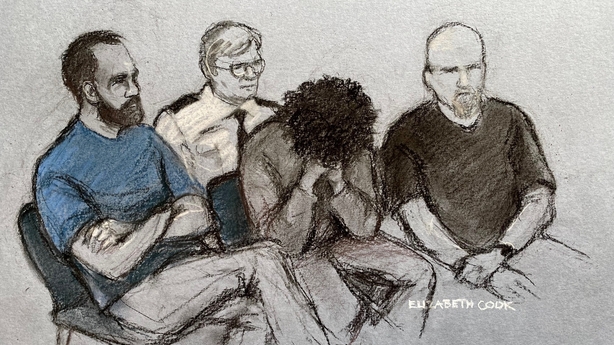It was early Monday afternoon when news started to break of a "major incident" in Southport.
The scale of the horror was beyond comprehension.
A community was left traumatised and devastated, trying to understand the senseless attack.
All the while, trouble was brewing on social media platforms. False information was rife. Hate and anger was at a tipping point.
The identity of the 17-year-old suspect could not be reported in the immediate aftermath of the attack, due to his age.
It gave space for speculation and misinformation to grow.
On Monday afternoon, a simple search of "Southport" on the social media platform X brought up pictures of an individual who was incorrectly labelled as the attacker.
A false name was also circulated.

These posts were shared by prominent names, including the social media influencer Andrew Tate, who is facing charges of rape and human trafficking.
Meanwhile, in Southport, a community put its best foot forward.
A vigil on Tuesday night was attended by thousands.
However soon afterwards, a separate demonstration outside a local mosque turned to chaos.
Garden walls were torn down so that bricks could be flung at police.
Many participants, not from Southport, were heard shouting anti-migrant chants.
The mother of one of the three victims had to publicly ask people to stop the violence.
Jenni Stancombe, mother of seven-year-old Elsie, wrote on social media: "This is the only thing that I will write, but please, please stop the violence in Southport tonight. The police have been nothing but heroic in these last 24 hours and they and we don't need this."
The riot was linked to the far-right group, the English Defence League, according to Merseyside Police.

The next day local bricklayers in Southport voluntarily rebuilt walls. But elsewhere, more trouble was brewing.
At 7pm on Wednesday, a protest branded "Enough is Enough" got under way outside Downing Street.
It didn't take long before it turned violent.
Bottles and cans were flung at police.
Flares were launched towards the Downing Street gates.
The police operation however was swift.
Riot police circled demonstrators, as a helicopter hovered overhead.
One by one, people were apprehended by police. Over 100 were arrested due to events that night.
It wasn't just in central London however where tensions boiled over.
There were angry clashes in several locations, including in Hartlepool where an 11-year-old boy was arrested on suspicion of arson, after a police vehicle was set on fire.
The next day Prime Minister Keir Starmer organised a meeting of senior police officers in Downing Street.
The message was one of support to police to use their powers.
He also committed to establishing a national violent disorder programme, allowing forces to share data.
"These thugs are mobile, they move from community to community, and we must have a police response that can do the same."
A media reporting restriction was lifted that same day, revealing the identity of the Southport attacker, Axel Rudakubana.
He was born in the UK and is the son of Rwandan parents.

The judge said that it was in the public interest for the 17-year-old's name to be made public, due to the level of disinformation and misinformation that was being spread.
The events of the last week have laid bare a number of challenges for the new prime minister.
The scourge of knife crime has long been flagged. Preventing an escalation of rioting will be an immediate priority.
However, combatting misinformation and disinformation on social media is also a pressing issue.
A number of online platforms were used to help organise riots this week and peddle conspiracy theories.
Extremist rhetoric, often seen online, was repeated during the riots.
A heavy-handed police approach may well help quell some further violent demonstrations. More are planned over the coming days, with rioting in Sunderland last night.
However, it might also be argued that there needs to be a greater focus on the sources of this hate and violence too.







